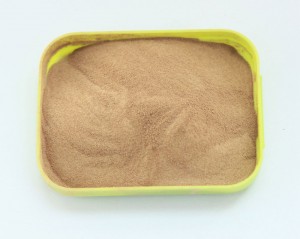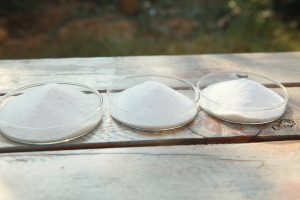Post Date:30,Nov,2022
A. Water reducing agent
One of the important uses of water reducing agent is to reduce the water consumption of concrete and improve the fluidity of concrete under the condition of keeping the water binder ratio unchanged, so as to meet the requirements of concrete transportation and construction. Most water reducing admixtures have a saturated dosage. If the saturated dosage is exceeded, the water reducing rate will not increase, and bleeding and segregation will occur. The saturated dosage is related to both the concrete raw materials and the concrete mix proportion.

1. Naphthalene superplasticizer
Naphthalene superplasticizer can be divided into high concentration products (Na2SO4 content<3%), medium concentration products (Na2SO4 content 3%~10%) and low concentration products (Na2SO4 content>10%) according to the content of Na2SO4. The dosage range of naphthalene series water reducer: the powder is 0.5~1.0% of the cement mass; The solid content of the solution is generally 38%~40%, the mixing amount is 1.5%~2.5% of the cement quality, and the water reduction rate is 18%~25%. Naphthalene series water reducer does not bleed air, and has little impact on the setting time. It can be compounded with sodium gluconate, sugars, hydroxycarboxylic acid and salts, citric acid and inorganic retarder, and with appropriate amount of air entraining agent, slump loss can be effectively controlled. The disadvantage of low concentration naphthalene series water reducer is that the content of sodium sulfate is large. When the temperature is lower than 15 ℃, sodium sulfate crystallization occurs.

2. Polycarboxylic acid superplasticizer
Polycarboxylic acid water reducer is considered as a new generation of high-performance water reducer, and people always expect it to be safer, more efficient and more adaptable than the traditional naphthalene series water reducer in application. The performance advantages of polycarboxylic acid type water reducing agent are mainly reflected in: low dosage (0.15%~0.25% (converted solids), high water reduction rate (generally 25%~35%), good slump retention, low shrinkage, certain air entrainment, and extremely low total alkali content.
However, in practice, polycarboxylic acid water reducer will also encounter some problems, such as: 1. The water reducing effect depends on the raw materials and mix proportion of concrete, and is greatly affected by the silt content of sand and stone and the quality of mineral admixtures; 2. The water reducing and slump retaining effects depend heavily on the dosage of water reducing agent, and it is difficult to maintain the slump with low dosage; 3. The use of high concentration or high strength concrete has a large amount of admixture, which is sensitive to water consumption, and a small fluctuation of water consumption may cause a large change in slump; 4. There is compatibility problem with other types of water reducing agents and other admixtures, or even no superposition effect; 5. Sometimes the concrete has large bleeding water, serious air entrainment, and large and many bubbles; 6. Sometimes temperature change will affect the effect of polycarboxylic acid water reducer.
Factors affecting the compatibility of cement and polycarboxylic acid water reducer: 1. The ratio of C3A/C4AF and C3S/C2S increases, the compatibility decreases, C3A increases, and the water consumption of concrete increases. When its content is greater than 8%, the slump loss of concrete increases; 2. Too large or too small alkali content will adversely affect their compatibility; 3. The poor quality of cement admixture will also affect the compatibility of the two; 4. Different gypsum forms; 5. High temperature cement may cause rapid setting when the temperature exceeds 80 ℃; 6. Fresh cement has strong electrical property and strong ability to absorb water reducer; 7. Specific surface area of cement.
Post time: Nov-30-2022

